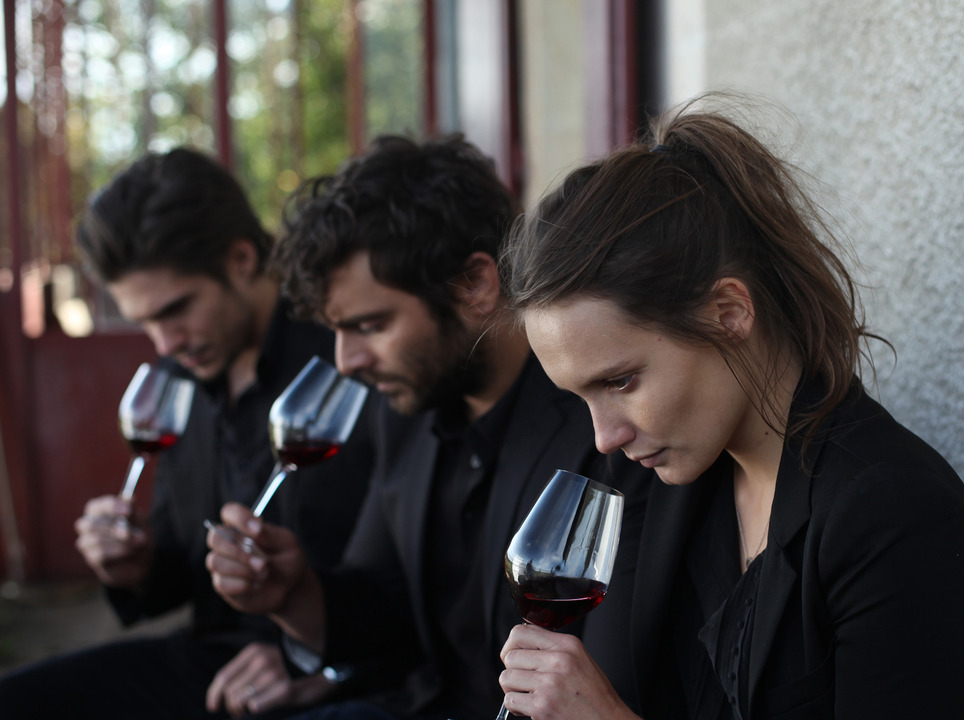 Image courtesy of “Ce qui nous lie” (2017)
Image courtesy of “Ce qui nous lie” (2017)
As the days grow longer and the French countryside bursts into bloom, the month of May ushers in a shift not just in climate but in the rhythms of French life—particularly at the table. It is the beginning of rosé season, a time when bottles of pale pink wine take pride of place on café terraces, picnic blankets, and family tables. Rosé is more than just a seasonal preference in France; it is a cultural rite, one that blends taste, terroir, and tradition. Alongside it, one also finds regional springtime specialties like vin de mai—the rarely discussed but historically rich May wine infused with herbs or flowers.
In this guide, we explore the traditions, aesthetics, and sensory pleasures that define France’s wine culture in May.
The Rise of Rosé: A Provençal Tradition Goes Global
While rosé has ancient roots—dating back to the early winemaking practices of the Greeks and Romans—it is Provence that has given the wine its modern identity. The warm, sun-drenched climate of southern France, tempered by the Mistral winds and Mediterranean proximity, produces grapes perfectly suited to rosé’s light, crisp style.
By May, rosé season is in full swing. Unlike red wines aged in oak or hearty whites reserved for winter, rosé is the drink of immediacy and lightness. Typically made from Grenache, Cinsault, Syrah, or Mourvèdre grapes, Provençal rosés are pale, almost salmon-pink in hue—dry, refreshing, and subtly aromatic, with notes of wild strawberry, melon, citrus, and herbs.
In France, rosé is not viewed as frivolous or unserious. It is both gastronomic and sociable. It pairs effortlessly with grilled fish, salade niçoise, soft cheeses, or simply a crusty baguette and fresh chèvre. It is sipped at leisurely lunches, apéritifs in the garden, or while watching pétanque games under plane trees. To drink rosé in May is to embrace the ethos of seasonal living, of light, leisure, and conviviality.
Vin de Mai: The Forgotten Charm of May Wine
Lesser known but equally enchanting is vin de mai, or May wine—a centuries-old custom with roots in central and northern France, and akin to the German Maibowle. Traditionally, this wine is infused with fresh woodruff (asperule odorante)—a fragrant spring herb with notes of vanilla and hay—along with citrus peels, sometimes strawberries, and occasionally a splash of elderflower.
Historically, vin de mai was prepared to celebrate the arrival of spring, often served during fêtes champêtres (rustic outdoor parties) or on May Day itself. It’s an ephemeral pleasure, timed precisely to the short flowering season of its ingredients. Though more obscure today, some winemakers and heritage culinary enthusiasts are reviving the practice, seeing it as a nod to the slower, seasonal traditions that defined pre-industrial food and drink in rural France.
This wine is typically made using a neutral white wine base—often Sauvignon Blanc or Sylvaner—and gently infused for hours, then served chilled in carafes. The result is not unlike a floral apéritif—a gentle, aromatic drink that captures the fleeting nature of spring itself.
Where to Drink: Regions and Recommendations
- Provence: The heartland of rosé. Towns like Aix-en-Provence, Cassis, and Bandol produce some of the finest rosés in the world. Look for producers like Château Miraval, Domaine Tempier, or Château d’Esclans (home to the internationally famous Whispering Angel). Local markets and vineyards begin featuring rosé prominently in May, and wine bars often offer seasonal tastings.
- Loire Valley: Known for its light, fresh rosés made from Cabernet Franc and Gamay. The rosés from Anjou or Rosé de Loire appellations are particularly crisp and food-friendly. Many are biodynamic or organic, reflecting the region’s artisanal bent.
- Corsica: The island’s rugged terroir and native grape varietals (like Sciaccarellu and Niellucciu) yield rosés that are more structured and savory—excellent with grilled meats or seafood.
- Alsace and Lorraine: More commonly associated with white wine, some winemakers in these northeastern regions still produce vin de mai-style wines, either commercially or as a local specialty. If visiting during early May, you may stumble across village festivals or weekend markets offering homemade infusions.
How to Serve and Enjoy
- Temperature: Rosé is best served chilled—around 10–12°C (50–54°F)—to preserve its freshness. Over-chilling can mute its subtle aromas, so avoid icy glasses.
- Glassware: Use a standard white wine glass to allow the aromas to open up. Stemless or novelty glasses, while trendy, can hinder the wine's sensory profile.
- Pairings: Rosé’s versatility is part of its charm. Pair it with Mediterranean dishes, charcuterie, grilled vegetables, or just olives and almonds. For vin de mai, treat it like an apéritif: serve with light canapés, goat cheese toasts, or spring salads.
Cultural Significance: Rosé as a Mood, Not Just a Wine
To understand rosé in May is to understand the French concept of art de vivre—the art of living. Rosé is not merely a wine but a seasonal expression of lifestyle. It’s about taking time, lingering outdoors, sharing a moment with friends, and harmonizing with the rhythms of the natural world.
May, with its warmer weather and public holidays (including May Day, Victory in Europe Day, and Ascension), offers ample opportunity to slow down and enjoy life’s simpler pleasures. A glass of rosé under a flowering tree, a chilled carafe of vin de mai on a picnic blanket—these are not just picturesque scenes, but reflections of a deeper cultural ideal: one that values seasonality, sensuality, and shared experience.
Conclusion: Savor the Season
In a culture where wine is not merely consumed but contemplated, May wine and rosé stand out as ephemeral yet essential parts of French life. They are symbols of transition, from the heavier wines of winter to the lighter, livelier tastes of spring. Whether you’re savoring a Provençal rosé on a café terrace or discovering the aromatic charm of homemade vin de mai, you’re participating in a deeply rooted tradition—one that celebrates not just flavor, but the fleeting beauty of the season itself.